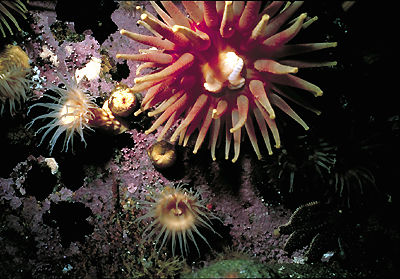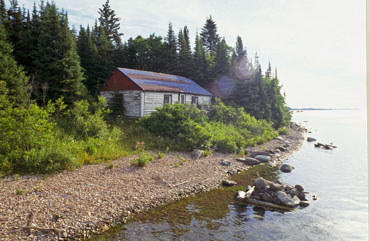Waterton Lakes National Park (established 1895, 505 km2) is situated in the southwestern corner of Alberta on the Canada-US border. In 1932, this park was united with Montana's Glacier National Park to create the world's first international peace park. In 1995 the 2 areas were declared a World Heritage Site based on the exceptionally rich plant and mammal diversity, and on the outstanding glacial and alpine scenery.
Natural Heritage
The setting is spectacular. In less than a kilometre, the dry rolling hills of the prairies soar to icy peaks nearly 3000 m high. The 3 Waterton Lakes, nestling between 2 mountain ranges, are over 150 m deep, the deepest in the Rockies. Because the park embraces both prairie and mountain, there is a great variety of plant and animal life.
Pronghorn and coyote roam the grasslands; mountain goat, bighorn sheep, grizzly bear and marmot frequent alpine meadows and barren ridgetops.
Human History
The area, once a Blackfoot stronghold, was first visited by Europeans in 1858 when Thomas Blakiston explored the area. He named the Waterton Lakes after a British naturalist. In the early 1900s Alberta's first oil well was drilled near Cameron Creek at Oil City.
Facilities
The park provides facilities for tent, recreational-vehicle and primitive camping in all seasons, and has numerous trails. Four scenic parkways provide vehicle access to the interior of the park.
See also Biosphere Reserves.

 Share on Facebook
Share on Facebook Share on X
Share on X Share by Email
Share by Email Share on Google Classroom
Share on Google Classroom












